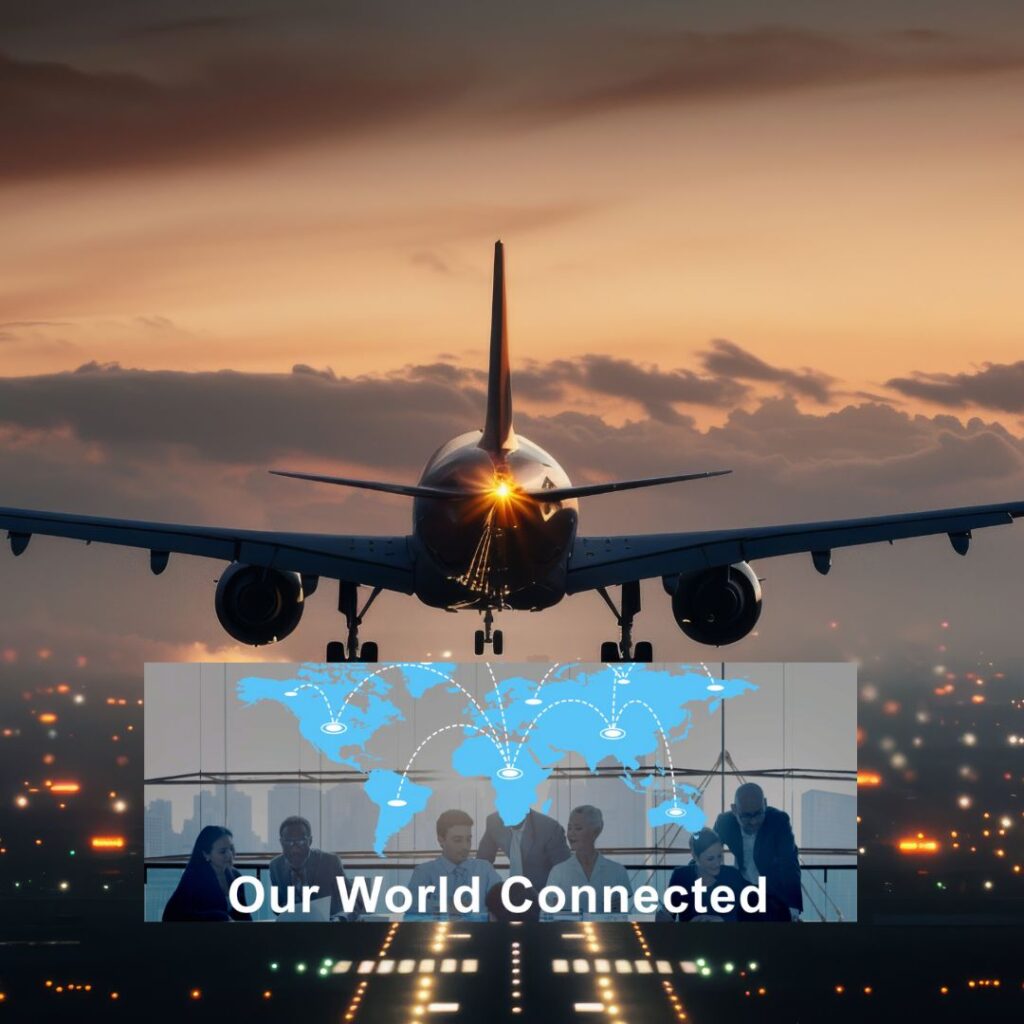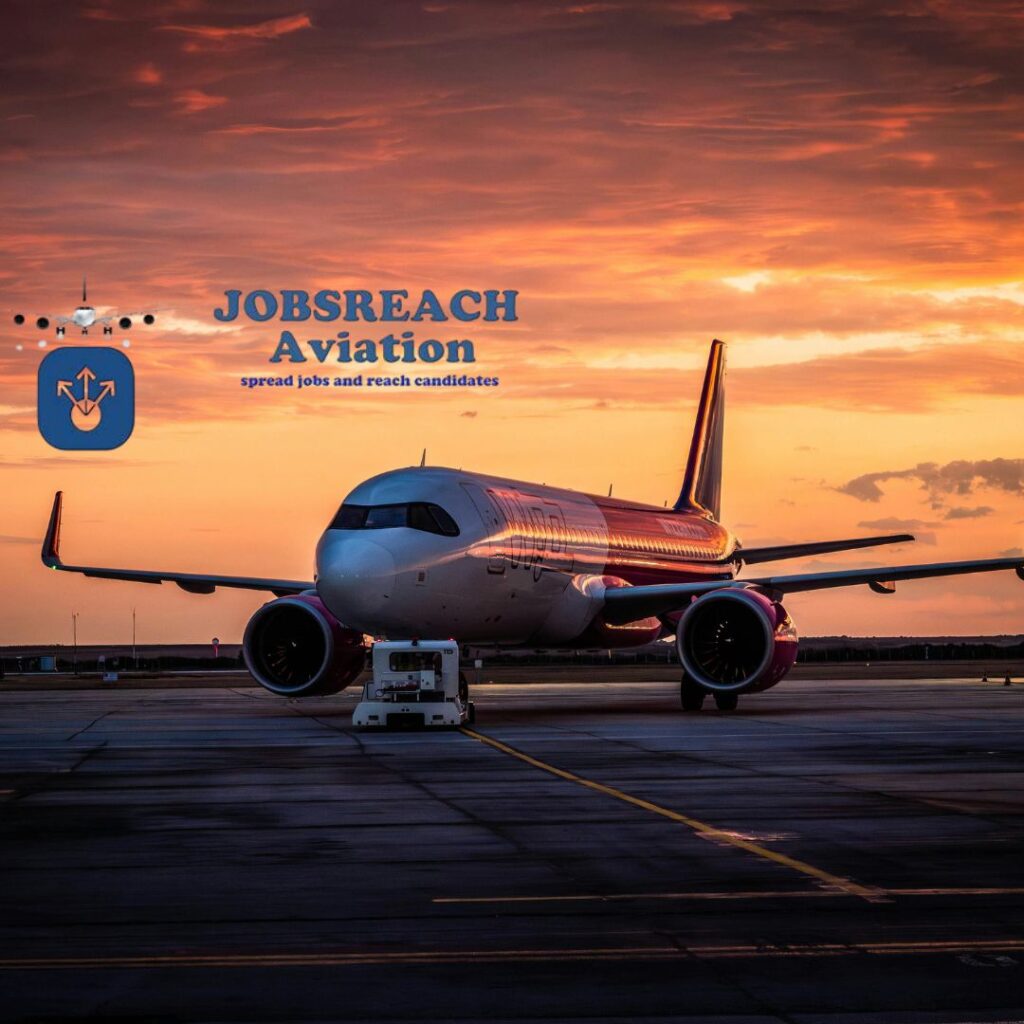The aviation industry stands as one of the world’s most vital and interconnected sectors driving trade, tourism, innovation, and global connectivity. Yet, as demand is high, the industry faces severe bottlenecks: shortages of skilled professionals, aircraft parts, and sustainable fuel supply. Understanding both its strengths and weaknesses is essential to navigate aviation’s next decade.

Global Strengths
1. Strong Demand and Post-Pandemic Recovery
After a historic downturn during COVID-19, air travel has rebounded sharply. According to the International Air Transport Association (IATA, 2025), global passenger traffic grew by 10.4% in 2024 compared to 2023, surpassing pre-pandemic levels in most markets. Load factors reached record highs averaging 83–84%, reflecting both strong demand and optimized capacity utilization (IATA, Air Passenger Market Analysis, Jan 2025).
2. Economic Impact
Aviation is more than a transport mode—it is an economic engine. The Air Transport Action Group (ATAG) estimates the industry supports 86.5 million jobs worldwide and contributes US$4.1 trillion in global economic activity, or nearly 3.9% of global GDP. While air transport carries less than 1% of the world’s freight volume, it represents around 33% of global trade value, underscoring its critical role in high-value supply chains (ATAG, Aviation Benefits Beyond Borders, 2024).
3. Innovation and Sustainability Initiatives
The aviation sector is investing heavily in Sustainable Aviation Fuel (SAF), operational efficiency, and next-generation aircraft. While SAF currently accounts for less than 0.5% of total fuel consumption, IATA projects it could contribute up to 65% of emissions reductions needed to achieve net-zero by 2050 (IATA Net Zero Roadmap, 2025). Airlines are also adopting more efficient aircraft and optimizing air traffic management to reduce fuel burn.
4. Expanding Infrastructure and Connectivity
Emerging markets—particularly in Asia-Pacific, the Middle East, and Latin America are leading global growth in seat capacity and airport infrastructure. According to Aviation Week (Q3 2025), these regions have invested billions in new terminals, smart airport systems, and expanded route networks to meet post-pandemic demand.
Key Shortages and Global Challenges
Despite its strengths, aviation faces acute shortages that could limit growth and resilience.
1. Workforce Shortage: The Most Pressing Crisis
The CAE Aviation Talent Forecast (2025) reports the industry will need 1.5 million new aviation professionals by 2034 including pilots, maintenance technicians, cabin crew, and air traffic controllers. Many regions are already facing gaps due to retirements, pandemic-related attrition, and limited training capacity.
- Asia-Pacific leads in pilot demand due to rapid fleet expansion.
- Europe faces air traffic control and maintenance technician shortages.
- North America struggles with an aging workforce nearing retirement.
To compound the issue, training bottlenecks such as simulator availability and regulatory licensing delays limit how quickly new professionals can enter the workforce.

JobsReach Aviation: Bridging the Global Talent Gap
In response to these workforce challenges, JobsReach Aviation has emerged as a specialized digital platform dedicated to empowering aviation professionals both fresh graduates and experienced personnel.
The platform connects aviation talent directly with employers across airlines, MROs, airports, and aerospace organizations, addressing the hiring bottleneck. By providing a centralized hub for recruitment, networking, and industry updates, JobsReach Aviation helps professionals:
- Access real-time job opportunities and career growth paths from aviation employers.
- Connect with peers globally to share knowledge, discuss trends, and enhance professional visibility.
- Stay updated with industry news, training events, and certification programs.
Through this focused ecosystem, JobsReach Aviation contributes to bridging the talent gap, enhancing workforce mobility, and making aviation careers more accessible, agile, and future-ready.
2. Aircraft and Parts Supply Chain Constraints
The global supply chain remains under pressure. IATA (Oct 2025) reported aircraft delivery delays and component shortages that forced airlines to keep older fleets operational longer—raising fuel and maintenance costs. The commercial aircraft backlog exceeded 17,000 units globally, the highest in history, due to manufacturing and logistical disruptions (IATA Technical Operations Supply Chain Report, 2025).
3. Rising Operational Costs
According to PwC’s 2025 Aviation Industry Review, airlines are contending with rising costs—fuel, leasing, maintenance, and labor—estimated to have added over US$11 billion in extra expenses globally in 2025 alone. Inflation and energy price volatility compound these pressures.
4. Environmental and Regulatory Pressures
As governments tighten emission targets, airlines face the challenge of balancing growth with sustainability. The Net Zero 2050 commitment by IATA demands rapid SAF scaling, fleet modernization, and investment in carbon offset mechanisms. Yet, limited global SAF production capacity remains a bottleneck, making regulatory and financial support essential.
5. Infrastructure Bottlenecks
Airport congestion and outdated air traffic control systems threaten efficiency in several regions. According to IATA’s Global Capacity Planning Report (2025), infrastructure investment is not keeping pace with demand growth, especially in developing regions, leading to slot constraints and flight delays.
Regional Variations
- Asia-Pacific: Rapid fleet growth, but major pilot and maintenance technician shortages.
- Europe: Mature infrastructure but facing aging workforce and controller shortages.
- North America: Training capacity exists, but high retirement rates persist.
- Africa & Latin America: Limited investment and training facilities constrain growth potential despite rising demand.
Broader Implications
If unaddressed, these shortages will lead to:
- Safety Risks – Reduced oversight due to understaffed regulators and inspectors.
- Higher Airfares – Limited capacity and high costs push ticket prices up.
- Operational Disruptions – Increased delays and cancellations due to maintenance and staff shortages.
- Missed Climate Goals – Slower adoption of SAF and modern fleets jeopardizes sustainability targets.
Pathways to Strengthening Aviation
- Invest in Workforce Development – Expand flight schools, technical training, and instructor programs. Platforms like JobsReach Aviation can accelerate this by connecting aviation professionals directly with employers.
- Rebuild Supply Chains – Diversify suppliers, streamline certification, and enhance parts logistics.
- Modernize Infrastructure – Upgrade airports and air traffic systems to reduce congestion.
- Accelerate Sustainability – Scale SAF production, incentivize green investment, and standardize emissions policies globally.
- Regulatory Collaboration – Align certification and licensing processes across countries to ease workforce movement.
Outlook: The Flight Path Ahead
Demand for air travel continues to rise driven by globalization, economic development, and tourism. But without solving talent and supply shortages, the industry’s growth will slow, costs will rise, and climate goals will be jeopardized.
Still, the future can be bright: collaboration between governments, manufacturers, airlines, and platforms like JobsReach Aviation offers a path toward a more agile, sustainable, and inclusive aviation ecosystem one that connects people and economies without limits.
References
- International Air Transport Association (IATA). Air Passenger Market Analysis, Jan 2025.
- IATA. Net Zero Roadmap, 2025.
- IATA. Technical Operations Supply Chain Report, Oct 2025.
- Air Transport Action Group (ATAG). Aviation Benefits Beyond Borders, 2024.
- CAE. Aviation Talent Forecast, 2025–2034.
- PwC. Aviation Industry Review & Outlook, 2025.
- Aviation Week Network. Global Air Transport Outlook, Q3 2025.
Leave a Reply